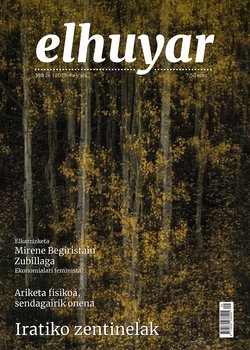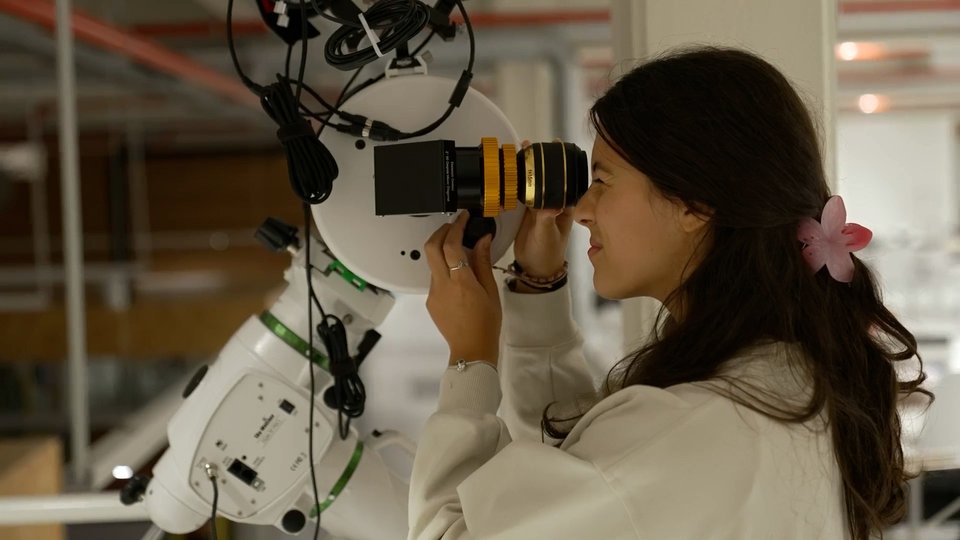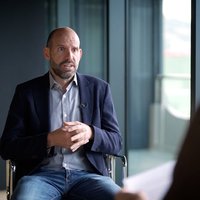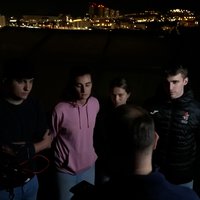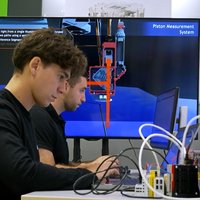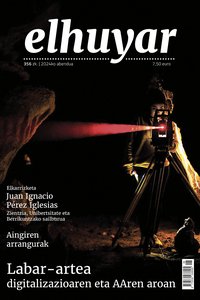Jean Marie Lehn: "Chemistry is also art"
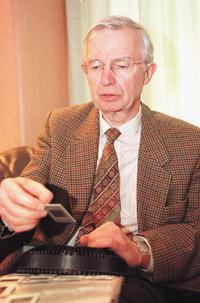
The Chemistry House of San Sebastian celebrates its XXV. The conference, given by the French chemist Jean Marie Lehn, aroused great interest in the events he has organized on the occasion of his anniversary. Lehn, Donald J. Cram and Charles J. In 1987 he received the Nobel Prize in Chemistry with Pedersen for his work in the field of molecular knowledge. We approached the talk that explained perfectly what is the field of supramolecular chemistry so baptized.
How would you define supramolecular chemistry?
Supramolecular chemistry is the field of chemistry that studies non-covalent bonds between molecules. We do not investigate what happens inside the molecules, we are interested in what happens between them. We want to know how superimposed molecules are organized and why.
What are these non-covalent links based on?
Our work is based on the research of the key/lock relationship between molecules. In nature, in our body, there are numerous molecules that function as key (substrate) and lock (receptor), each substrate has its specific receptor and will only join with it, just as a key opens a single door. This molecular knowledge is very important in biology and biologists have developed a wide field of research based on this mechanism. Chemists, however, want to go beyond nature. We want to synthesize molecules with that property of knowing each other but they are not in nature. In fact, supramolecular structures are not only key/lock structures, but also information accumulation structures. If they know each other it is because they have information to know each other. I
Could the molecules you work as a material be used to keep the formation?
Yes, that is one of the areas we are investigating now. We work with supramolecular structures that are ordered by themselves. These molecules should not react to each other. When they are put at once they only join together, forming orderly supramolecular structures. These structures have very interesting properties and some of the molecules investigated could be used in microelectronics and nanotechnology. These structures should not be synthesized. Only they unite and command. This property is very interesting when working with such small dimensions.
Have your research focused more on technological than biological applications?
No, supramolecular structures have many biomedical applications. We have synthesized molecules that could be useful in gene therapy and can help diagnose diseases. Supramolecular chemistry offers a lot of incredible possibilities. If we want to know or catch a molecule like this, we can synthesize another one specific to it.
We can adapt the phenomena that occur in nature for what we want, for biomedical applications or to form nanostructures.
We talk about the applications of Supramolecular Chemistry. At present it seems that this is the essence of any research, that is, research is conducted for use. Are we forgetting the importance of basic research?
Unfortunately yes, and that is a very serious mistake. Current research focuses too much on app search. Of course, research needs to have applications, but basic research is also essential. Today's basic research is probably the essence of the great applications of the future. Without basic research there is no application. As someone said, if there were no basic research, we would have candles of all sizes, colors and shapes, but we would not have electricity.
He has repeatedly claimed that Europe must put more money into the investigation. So little money is spent on research?
The percentage of gross domestic product that Europe earns for basic research is much lower than that allocated by the United States or Japan. But not only that, but also asks European research to be competitive. But to be competitive you have to be comparable. You can not give little money and ask for many results. Now there is a lot of talk about the "society of knowledge", but that society of knowledge does not arise from nothing. Knowledge must also be financed.
Does the United States remain the European mirror?
In the United States they have more money to promote research and projects, but in Europe there are also strong studies. It depends on the areas. However, the only problem that Europe has or the most serious is not the economic one. Our structures are very rigid, with deep and old roots, so they are sometimes difficult to adapt to current dynamics. That doesn't happen in the United States. However, this rigidity allows a greater continuity in the research carried out in Europe. On the other hand, there is more money that brings more control and many are not willing to do so.
Does the scientist have any mechanism to control the use of his work?
No, but I don't think the control is of the scientist. The use of scientific contributions is an important point of discussion, but I believe that the first task of science is to collect knowledge. Science provides resources to society through the collection of knowledge, but then it is to society itself to guide and regulate its use. Science has no barrier, scientific research cannot be limited. For me it is unacceptable to want to limit scientific research. However, it's easier than saying all this, because society often doesn't know exactly what researchers are working on. That is why people often have an answer that I consider irresponsible, and instead of making an effort to understand it, attentive to fear.
Are genetically modified foods an example of this lack of information and fear?
Yes, all the problems that have occurred around genetically modified foods have been largely because the issue has been wrongly addressed. People have a terrible fear of these foods, but there is no reason to scare them, because these foods and their transformations are controlled. People don't realize or don't want to realize that all of our dogs, cows and sheep are genetically modified animals. We want a cow with a lot of milk and for this we cross this and her. When we do we are doing a genetic transformation, an uncontrolled genetic transformation. In these crosses, we also mix a lot of genes. In the laboratory, however, it is the only gene that has been transformed and we know which is the only one. Many times it is thought that what is done in the hamlet is natural and what is done in the laboratory is artificial, but that is not true. Both are equally artificial and equally natural, and if what is done in the laboratory serves is because it is natural.
What is the core of these communication problems between science and society?
If two people want to understand each other, they have to speak the same language, and often that is the problem between scientists and society. If I wanted to understand Basque, I should learn Basque. Anyone who wants to understand biology should also try to learn biology. We cannot suddenly understand everything.
LEHN reviews in Donostia
In the place of the molecules, Lehn spoke of the chemistry of the "supramoleculas". Behind this great name are the gigantic and complex structures generated by intermolecular interactions. "Chemistry is not just material science, but information accumulation." Knowledge of interactions allows the design and synthesis of such structures. Although it seems like a senseless occurrence by chemists, it follows a very attractive work for both physicists and biologists and doctors. "Supramolecular chemistry is a very powerful tool," says Lehn. "It allows us to invent new unnatural structures."
No molecule or supramolecula was seen in the initial slides of the Lehn conference. XIX. He presented images of 20th century scientists. In fact, at this time the maturation model of a substrate by a protein was developed. It is the standard key and lock model among today's chemicals. From there, during this century, numerous research has been compiled using the specificity of the shape and size of the molecules. Jean Marie Lehn has also worked with very interesting and well-known chemicals. For example, we could see Woodward or Fischer in their photos. A couple of minutes later he immersed himself in the "art" of binding molecules.
This has three outstanding applications: molecular knowledge, catalysis and transport. From molecular knowledge the other two are equally understandable. Lehn explained how a large molecule can assimilate a smaller one and how to take advantage of its physical properties. Their examples included a structure that separates DNA from RNA and an additional artificial antibody prepared for an antigen (disease). He explained it clearly, easily understood and very well.
He presented a spectacular example related to gene therapy, a fashion theme: a lipid structure that would allow genes to cross the plasma membrane of the cell. A work of years, beautiful and simple.
The last concept exposed by LEHN was of great interest to chemicals. It speaks of the molecules that are ordered by themselves and of the supramolecular structures thus obtained. He cited Supramolecular Polymers Chemistry and the electronic networks available in microelectronics. But one thing doesn't have to exclude the other, "silicon microelectronics are fine," Lehn said. "This is an alternative that can have several useful features."
Finally, he equated supramolecular chemistry to art. "The rules are merely physical laws that fulfill intermolecular bonds. Everything that comes from there comes from personal creativity." Good and simple chat. After hearing it, everyone understands well why they gave Jean Marie Lehn the Nobel Prize in Chemistry in 1987.
Buletina
Bidali zure helbide elektronikoa eta jaso asteroko buletina zure sarrera-ontzian


